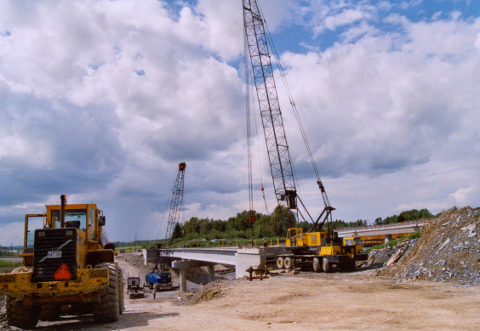

| Topic: Tandem Lift Weight Limits Cannot be Ignored | |
| Date Issued: August 17, 2012 | Date Revised: September 1, 2022 |

One side of the beam had already been raised when the second crane’s operator was instructed to raise his end of the concrete beam. Movement of the load caused the back end of the first crane carrier to rise about 3.6 m in the air. The beam was quickly lowered to the ground causing the lattice boom to strike the capbeam. This resulted in the crane carrier dropping back on its wheels, thereby creating a spring action in the boom. The boom fell backwards, hit the crane cab and collapsed onto a nearby truck. Five workers in the immediate vicinity could have suffered severe injuries or death.
An investigation concluded that proper planning and procedure was not in place at the time of the incident.